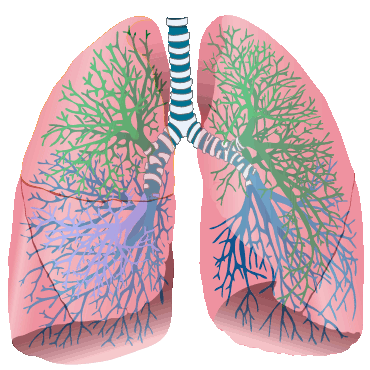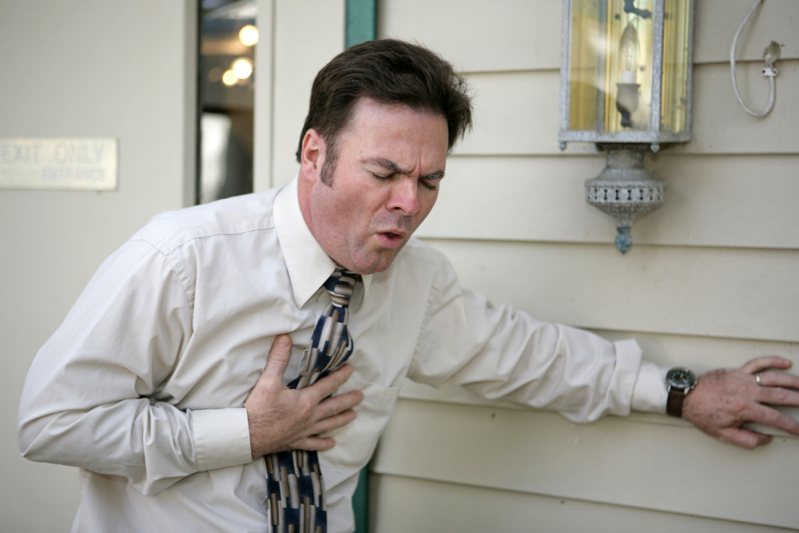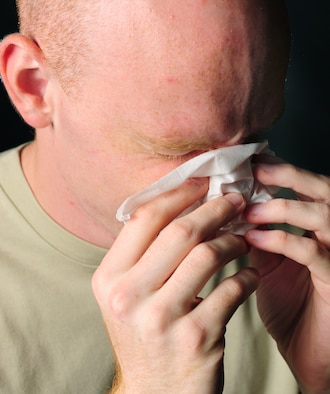If you have COPD, then you know that it can be dangerous when your symptoms suddenly get worse. That's why preventing flare-ups and exacerbations is one of the main goals of treatment for people with COPD.
A COPD exacerbation (also known as an acute exacerbation) happens when you get sick or your lungs get especially inflamed, making your symptoms much worse for an extended period of time. Even though they go away eventually, exacerbations can cause serious health complications and permanent damage to your lungs.
When you have COPD, your quality of life depends greatly on how much you prioritize your health and avoid habits and environments that put your lungs at risk. That means doing everything you can to keep your body strong and prevent acute exacerbations.
In this article we're going to help you do just that by explaining a variety of ways you can reduce your risk of experiencing a COPD exacerbation. We'll help you understand why exacerbations happen, how to recognize the warning signs.
Most importantly, we'll show you a variety of practical methods and techniques you can start using today to avoid flare-ups and exacerbations in the future. So if you're ready to improve your quality of life and take charge of your health today, continue reading for 15 practical ways you can reduce your risk for acute COPD exacerbations.
{{cta('fa8abc2a-1e88-4fa3-82fd-1cb5b9ed43b2','justifycenter')}}
What is a COPD Exacerbation?
Most COPD patients are able to keep their symptoms under control most of the time, but flare-ups and exacerbations are always a threat. The frequency of exacerbations varies from patient to patient and depends on a variety of risk factors, including age, disease severity, and physical activity level.
On average, COPD patients experience at least one or two exacerbations every year. This does not include minor flare-ups, which might happen much more frequently in response to mild irritants.
Flare-ups Versus Exacerbations

A COPD flare-up is a temporary increase in symptoms that can happen when you breathe in respiratory irritants like dust, smoke, or dry air. Flare-ups are generally mild, short-lived, and treatable at home.
Exacerbations, on the other hand, last longer and are more serious than mild flare-ups. They usually happen as a result of a respiratory illness or infection that causes inflammation, excess mucus, and reduced lung function.
Exacerbations often require a trip to the doctor, although they can sometimes be treated at home. It's important to talk to your doctor about what you should do in the case of an exacerbation and how long you should wait to call your doctor when your symptoms start to get worse.
In general, it's safest to talk your doctor as early as possible if you think you might be experiencing an exacerbation. That's why it's very important to recognize the early symptoms and warning signs of an oncoming acute exacerbation.
Unlike flare-ups, exacerbations can have extended or even permanent effects. Sometimes, even once an exacerbation passes, the COPD symptoms don't improve all the way. Some patient's conditions don't ever get back to the baseline that they were at before the exacerbation, and they have to cope with a minor, yet permanent, increase in symptoms from that point on.
Exacerbations can be life-threatening at any stage of the disease, but they are particularly dangerous for people with advanced COPD. Flare-ups are common in all COPD patients, although sensitivity to respiratory irritants and the severity of the flare-up can range significantly depending on the patient's physical condition and disease stage.
How to Recognize an Exacerbation

Exacerbations are serious business, and recognizing the early symptoms could save your life. An exacerbation can be debilitating, life-threatening, and is are not something you should ever take lightly. Most researchers agree that preventing exacerbations is one of the most important things you can do to live longer and slow down the progression of COPD.
Some exacerbations are mild, but some are serious and require early and immediate treatment to prevent serious complications. Severe exacerbations can cause you to be hospitalized or even end in death.
That's why it's vital to pay attention to how you feel and be able to recognize the early warning signs of an acute exacerbation. You should always be monitoring your symptoms and looking for signs that indicate they're getting worse. Often, the only early warning sign of an exacerbation is a worsening of the symptoms you already have.
If your worsened symptoms don't start to get better soon, you should talk to your doctor right away and begin any additional medication
or therapies that your doctor recommends. The earlier you begin treating an acute COPD exacerbation, the better your chances of avoiding life-threatening symptoms and hospitalization.

If you ignore worsened symptoms, they're likely to continue getting worse. The longer you wait to seek help, the more you'll be at risk for serious complications and the less likely you'll be to make a full recovery.
Here are some of the early warning signs of a COPD exacerbation:
- Rapid, shallow breathing
- More difficulty catching your breath than usual
- More coughing or wheezing than usual
- A change in mucus color (yellow, green, or blood-tinged in color)
- Increased mucus in your lungs and airways
- Feeling unusually sleepy or fatigued
- Difficulty sleeping because your symptoms keep you up
- Having less energy than usual to do normal daily activities
- Breathlessness and fatigue at rest or after extremely light activities
- Confusion
If you think you're experiencing the early symptoms of an exacerbation, follow your COPD treatment plan and talk to your doctor as soon as possible. If your symptoms get significantly worse or you can't catch your breath, seek emergency medical care immediately.
There are certain symptoms that are a sign of serious oxygen deprivation and require immediate medical care. If you experience confusion, a severe headache, difficulty catching your breath at rest, a bluish tint to your skin, or have a sudden difficulty walking short distances, you should seek emergency medical attention immediately.
What Happens When You Have an Exacerbation?
When you have an exacerbation you'll experience increased symptoms and increased mucus production that makes it more difficult than usual to breathe. This happens because of inflammation that reduces your lung function and causes inflammation in your lungs and airways.
Mild exacerbations can sometimes be treated at home, although you should always talk to your doctor about when you should call him first. Your doctor might recommend a variety of medications to use in the short term to manage your symptoms until the exacerbation passes.
Here are some common medications used to treat exacerbations at home:
-
Bronchodilator Inhalers: Your doctor might recommend that you use your bronchodilator medication more often or prescribe you a different inhaled medication than you usually use. This will help open up your airways and make it easier to breathe.
-
Corticosteroid Medications: Inhaled or oral corticosteroids are common treatments for COPD exacerbations. They help reduce inflammation in your lungs, reduce swelling, and open up narrowed airways.
- Antibiotics: If a bacterial infection is the cause behind your exacerbation, your doctor might prescribe a course of antibiotics to treat it.
However, if an exacerbation gets worse, you might need to go see your doctor or be hospitalized if it gets severe. You should seek emergency medical care if you experience unusually severe symptoms, can't catch your breath, or show signs of low blood oxygen (like confusion, a severe headache, a bluish color to your skin, or extreme fatigue).
If admitted to a hospital, you will receive more intensive treatment that may include bronchodilators, systemic corticosteroids, supplemental oxygen, and breathing support. If your lungs aren't working well enough on their own, you may have to use a ventilator or a positive expiratory pressure (PEP) device to keep your airways open.

Without prompt medical treatment (and even with it), a serious exacerbation can be life-threatening. That's why preventing exacerbations is one of the most important things you can do to stay healthy and live longer with COPD.
What Causes COPD Exacerbations?
|
|
| Photo by Senior Airman Anthony Sanchelli |
There are many different COPD triggers, including dust, pollen, and cold air, that can cause your symptoms to get worse. However, these irritants usually only cause minor flare-ups, not full-blown exacerbations.
However, exposure to COPD triggers like respiratory irritants can significantly raise The majority of the time, exacerbations are caused by a respiratory illnesses or infection, not respiratory irritation alone.your risk of subsequent exacerbations.
According to research, respiratory illnesses cause 70 to 80 percent of exacerbations experienced by people with COPD. That's why it's so important to do whatever you can to avoid getting sick, including getting vaccinations, practicing good hygiene, and living a healthy lifestyle.
Here is a list of some of the most common causes of COPD exacerbations:
- Pneumonia
- The flu
- Seasonal allergens
- Smoke
- Air pollution
Unfortunately, in up to one-third of cases doctors are unable to determine the cause of a COPD exacerbation. It's important to make choices that limit your risk of having an exacerbation, but there's no way to reduce that risk to zero.
There are certain risk factors for exacerbations that you have little or no control over, like your age and the severity of your disease. Here are some common factors that put you a greater risk for exacerbations if you have COPD:
- A history of frequent exacerbations
- If you've had an exacerbation within the past year
- If you have more severe COPD symptoms (e.g. a severe daily cough or severe breathlessness every day)
- You have severely reduced lung function
- Low BMI
- Lack of exercise
- Old age

Taking care to avoid exacerbations is one of the most important things you can do to stay healthy, stay strong, and maintain your quality of life while living with COPD.. If you are ready to learn what you can do to protect your lungs and maintain your quality of life, continue reading to learn about fifteen different ways to avoid COPD flare-ups and exacerbations.
How to Prevent a COPD Exacerbation
Now that you understand the risk factors for exacerbations, why exacerbations happen, and how to recognize the early warning signs, it's time to learn how to prevent them. Even though you can't always avoid exacerbations, there are many different things you can do in your daily life that reduce your risk.
In these next sections, we're going to show you how you can avoid exacerbations by incorporating simple habits and techniques into your everyday life. We'll go in-depth into a variety of activities, useful techniques, and special precautions you can take to reduce your risk.
Don't put it off any longer; continue reading to learn about a variety of practical steps you can take today to reduce your risk of experiencing a COPD exacerbation.
Avoid Weather and Temperature Extremes
Hospitalizations for COPD-related exacerbations and complications go up significantly in extreme temperatures and weather. That's why you have to be particularly careful to protect yourself during the summer and winter months.
In general, it's a good idea to avoid going outdoors whenever it is extremely hot or cold outside. Both hot and warm air are hard on your lungs, make it difficult to breathe, and can make you more prone to flare-ups and exacerbations.
Avoiding Hot Weather

For some people with COPD, the summer heat brings relief and decreases their symptoms. But for those who are not so lucky, the hot air can make a variety of COPD symptoms worse.
When you spend time in the heat, it raises your body temperature, which makes your body have to work harder to cool you down. This is taxing on your lungs, which already need extra energy to function, and can make it much more difficult to breathe.
You are also more likely to get dehydrated and feel fatigued when you are out in the hot, humid air. Hot weather also tends to correspond with higher ozone pollution levels, which can irritate your lungs and make you even more prone to flare-ups and exacerbations.
Here are some tips for staying healthy and avoiding exacerbations in hot weather:
-
Always stay indoors when it is very hot or the air quality is low. Plan exercise and outdoor activities for milder days.
-
Plan activities during the early morning or early evening, when the temperatures are cooler. The hottest temperatures tend to occur between 11 am and 3 pm every day.
-
Drink lots of water during the summer, especially when you exercise or spend time outdoors. Always bring a bottle of water with you when you go out.
-
Keep your home cool and air-conditioned. If you don't have air conditioning, go to a public place that does have AC, like the library or mall, on very hot days.
-
If you feel overheated, try taking a cool bath or shower to cool down.
- Use a fan in your bedroom at night or any other rooms that tend to get hot and stuffy. You can also get a hand-held, battery-powered fan to bring with you whenever you go outdoors in the heat.
-
Drink a sports drink or salty food after sweating or spending time in the heat to replenish lost electrolytes.
-
If you are sensitive to allergens, always check your local pollen and allergen forecast. You can check it online at pollen.com.
- Bring your inhaler and any quick-relief medications with you whenever you go out in case your symptoms flare up.
Avoiding Cold Weather

Cold weather can also make COPD worse and put you at a much greater risk for exacerbations. In fact, one study showed that cold weather caused a significant increase in hospital admissions, with up to a 20% increase in hospitalizations for people with COPD. The main factors increasing the risk were lower temperatures, windchill, cold weather that lasted for more than a week.
Winter weather causes an increase in symptoms in part because cold air is denser, drier, and more difficult to breathe. Cold, dry air dries out your airways and nasal passages, causing inflammation that worsens symptoms and increases mucus production.
Together, these effects make it more difficult to breathe and increase your risk of getting an illness or infection. The effects are the worst at temperatures below freezing, but COPD hospitalizations increase at temperatures as high as 41 degrees Fahrenheit.
That's why it's so important to stay indoors and take extra precautions during the winter months. Here are some tips for avoiding cold weather and staying healthy during the winter:
-
Stay indoors on cold days and when the air quality is low. Don't exercise or do other physical activities outdoors; instead plan them for warmer days or save them for a warmer season.
-
Always dress warm for cold weather and use layers so you can add or remove them if your comfort level changes.
-
Always breathe through your nose, not your mouth. This allows the air to warm up and pick up moisture as it travels through your airways to your lungs.
-
Cover your mouth with a scarf or cold weather mask anytime you have to be out in the cold air. This traps the heat and moisture from your breath in order to warm and humidify the air you breathe.
- If you use supplemental oxygen, cover your oxygen tank and tubing when you go outdoors. You can string your tubing underneath your jacket or coat to keep it warm.
Humidity

Humidity is yet another weather condition that can have a significant effect on people with COPD. Most people do best when the humidity is around 40 percent, and a humidity range between 30 and 50 percent is recommended for people with respiratory conditions and diseases.
Both too little and too much humidity makes it difficult to breathe and can make your COPD symptoms worse. Dry air is harsh and irritating to your lungs, while extra-humid air is heavy and hard to inhale.
Humidity tends to be highest in warm weather, because warm air is able to hold more moisture. The air tends to be much drier during the winter, and the dense, cold air tends to make air pollution worse as well.
But humidity isn't just about the weather; even if the humidity is ideal outdoors, the humidity inside your house can still get high. Running a shower or bath and using appliances like your dishwasher or washing machine can raise the humidity in your home if you're not careful.
Humidity effects everyone differently, so pay attention to what humidity levels make your symptoms better or worse. To reduce your chances of flare-ups and exacerbations, you should avoid spending time outdoors any time the air is especially humid, especially dry, or polluted.

Here are some general tips for dealing with dry and humid weather:
-
Get a humidifier for your home and use it during the dry winter months. You can get one for your bedroom and any other space you tend to spend a lot of time in, or you can get a whole-house humidifier that hooks up to your home's main ventilation system.
-
When the humidity outdoors is very high, keep your windows and doors closed to keep the moist air out of your home.
-
Make sure any appliances that release moisture into the air, including your washing machine, clothes dryer, stove, and dishwasher well-ventilated.
-
Whenever you take a shower or bath be sure to open a window or turn on your bathroom fan to vent extra humidity.
- Use the vent fan on your stove when cooking steamy or smoky foods.
{{cta('43b79c5e-6bd6-4f02-ac27-2d038d20c146','justifycenter')}}
Attend Pulmonary Rehabilitation
Getting exercise and living an active life is another one of the best things you can do to keep your body healthy, strengthen your breathing muscles, and reduce your risk of COPD exacerbations. But in order to get enough exercise, you need to know how to manage your symptoms and control your breathing while you work out.
That's why many doctors recommend that COPD patents attend pulmonary rehabilitation, a special class designed specifically to help people with respiratory diseases live healthier, happier lives. Many people begin pulmonary rehabilitation after they have difficulty exercising and managing their disease on their own.
But pulmonary rehab is about more than just exercise; it's about learning how to manage all the different aspects of your life that are affected by COPD. You'll learn how to keep your lungs healthy, how to manage your symptoms, and how to handle the stress and emotional strain of living with a chronic disease.
Classes are usually run by medical specialists or social workers who have a wealth of knowledge and experience to share. Classes usually focus on these main areas:
- Exercise training classes
- Learning and practicing breathing techniques
- Diet and nutritional counseling
- Lung health and disease education
- Learning how to conserve energy for what's most important
- Mental health counseling and group support sessions
- Learning how to use oxygen and other medications to manage respiratory symptoms
Research shows that taking a pulmonary rehabilitation class increases exercise capacity and overall health in people with COPD. Multiple studies have also found that pulmonary rehab significantly reduces patients' risk of future exacerbations and hospital admissions, too.
Pulmonary rehabilitation is like a crash course on how to live the best possible life while managing your COPD. It's one of the best things you can do to jump-start your COPD treatment and learn how to integrate positive, healthy habits into your everyday life.
Find a Pulmonary Rehabilitation Class Near You

Pulmonary rehabilitation classes vary depending on where you live and what kind of help you need. Some programs are hosted as group classes at hospitals and clinics, some offer individual instruction, and some can even be done partially or fully at home.
If you have COPD, talk to your doctor about whether or not you could benefit from pulmonary rehabilitation. Your doctor can give you a referral and help you find a class in your local area that works for you.
Here are some resources to help you locate a pulmonary rehabilitation program near you:



